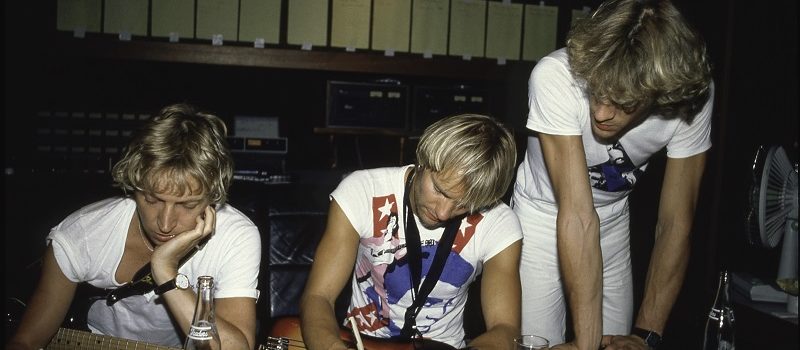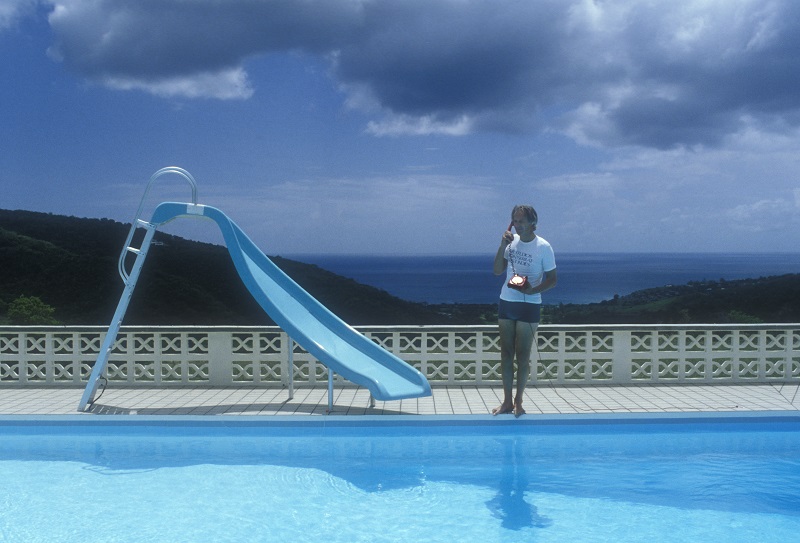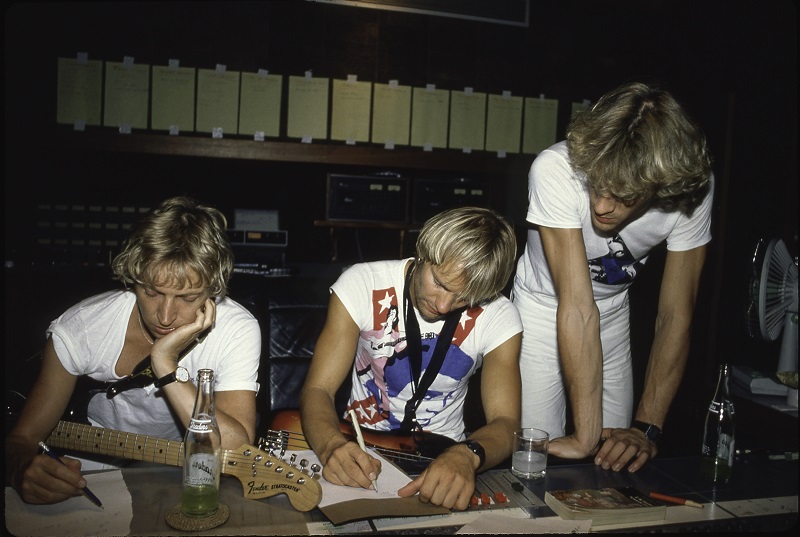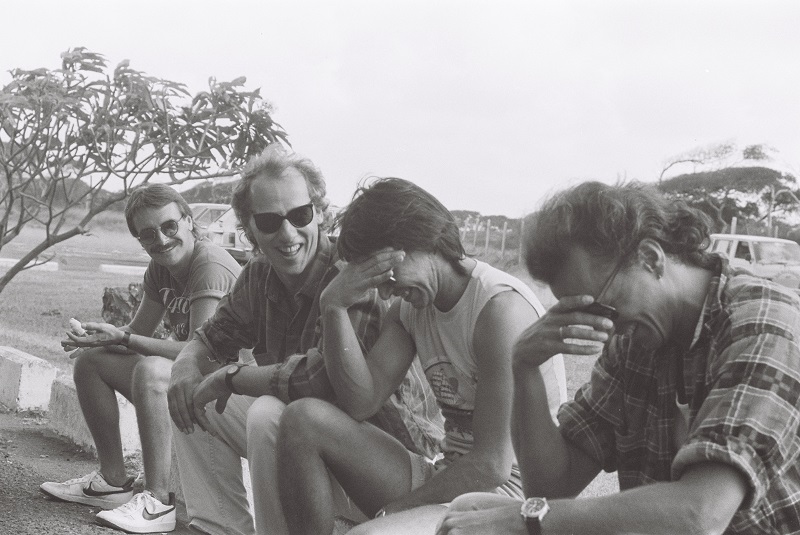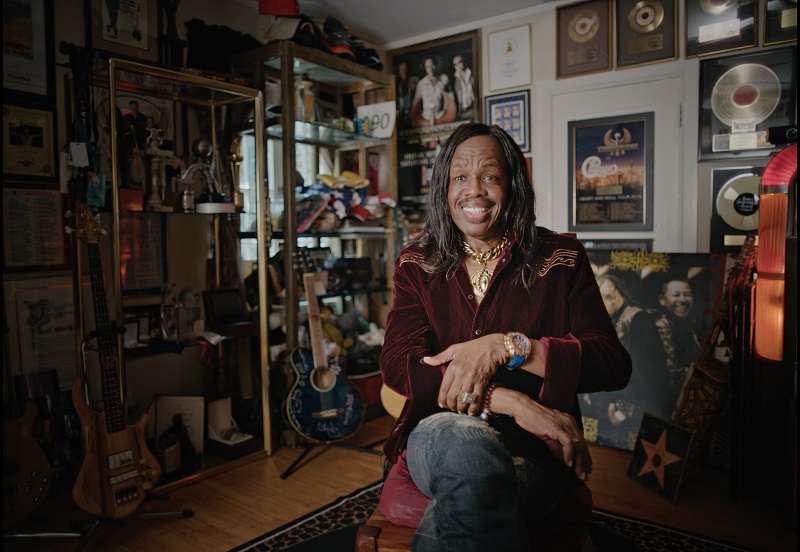If there is an album or 10 that you enjoyed and loved from the 80s, chances are it was recorded in the AIR Recording Studios in Montserrat. Longtime Beatles producer extraordinaire Sir George Martin wanted to get out of London and provide a kind of retreat to some of the biggest names in music in hopes that it would stoke a fire of creativity and brilliance.
It did.
Bands as far-reaching as Dire Straits (Brothers in Arms), The Police (Synchronicity), Paul McCartney (Tug of War), Jimmy Buffett (Volcano), Earth, Wind and Fire (Faces), The Police (Ghost In The Machine), Elton John (Jump Up, Too Low for Zero, Breaking Hearts), Duran Duran (Rio, Seven and the Ragged Tiger), Eric Clapton and Phil Collins (Behind the Sun) and Sting’s solo venture, the iconic Bring on the Night, as well as his Nothing like the Sun and then the one and only Rolling Stones and their 1989 smash Steel Wheels.
These pieces of modern pop music history were all recorded there in a paradise possessing a musical menagerie that produced some of the biggest hits and albums of that decade. What’s fascinating is the moniker of the film stems from the lingering volcano that seems to threaten the island nation but that has not “gone off” on a very long period of time.
The documentary director has put together a salute to Martin’s wizardry in creating the musical paradise in the first place, but also a salute to his vision that brought the world some of the greatest songs and albums of all time, certainly of that Decade of Decadence. The footage is extraordinary, witnessing these musicians in the most relaxed and chill landscape coming up with songs that would define a decade. There was the beach. There was a pool. There was a bar.
For example, when McCartney recorded Tug of War (which contains one of my favorite Paul solo songs of all time, Take It Away), he wanted Stevie Wonder to make the journey to the island studio to add his Rock and Roll Hall of Fame expertise to a little hit song called Ebony and Ivory. Witnessing the two geniuses playing together is one thing. Seeing them gather at the local bar near the recording studio and jam until 4 a.m. the morning together is beyond blissful and a gift to humanity.
There are many sequences that are absolutely terrific, but as a fan of The Police who was upset when they broke up after their biggest selling album and AIM recorded Synchronicity, one can see why after witnessing Under the Volcano. The band recorded the classic and iconic album in different parts of the studio and the house. Although crafting their most famous work, they could not have been further from the label “band.”
Different musical outfits, obviously, make different music and what is amazing to witness with the documentary is how each artist and band was treated differently and their musical needs were met in the most unique of ways. It was manna for musical creation. It was also a family at AIR Studios. Employees who worked there worked there for years upon years. The artists became friendly with the staff, the chef, and those who worked in the kitchen to the point that they were included in their parties and joyous libation celebrations.
The thing that made AIR Studios from Sir George Martin so special is it was an oasis away from the fame, the fans, and the spectacle that had become popular music. Districting is putting it mildly. Montserrat provided the literal island of pure artistry that brought out some of the best music of the entire decade. In fact, it was some of the recording artists’ most endearing and organic music they ever recorded. People joke there was something in the water, but it was much more profound than that.
Under the Volcano features interviews with numerous folks who were there and whose description of the musical magic and personal bliss that was achieved at AIR is palpable. Then again, there’s also a story that reflects why a certain band broke up after their most successful record—recorded at AIR. That one will Sting. But still, there is an undeniable brother and sisterhood that was established at the recording studio and living to make the facility their home for an extended period of time. As such, they become friendly with the local staff, the village bars, and those who worked there and frequented them, the kitchen staff at AIR to the people who cleaned the pool.
Director Gracie Otto has compiled both interviews from the rich and famous, as well as those who happened to be in the most musically magical places that existed. From the chef to the locals who basked in the glory that was the loveliest of inventive places of the 20th century. There is a particular reverence for Martin that is expressed through interviews with the icon, as well as his son, Niles—whose insight is as valuable as if it had come from his old man himself.
The other aspect of Under the Volcano is it is not solely a celebration of a musical recording Mecca, but an island whose people are as rich in spirit as they are in legacy. Even though all the while there was a brooding volcano threatening their island, there was something supernaturally sensational about life on the Caribbean island. Otto captured that and answered a valuable question: Why people would settle there when there was always the threat of a volcanic eruption?
First of all, there was an early warning system and second of all, it was worth the risk. Tens of millions live in California, who exist under the constant guise of an enormous Earthquake. There is something about balancing the fear of what could be coupled with the magic of what is.
Viewers are also treated to a front-row seat to the masters making their musical additions to one of the most prolific of musical decades. There may not have necessarily been something in the water. But there was in the air. Between the ocean air, the delightful pool, the relaxed—almost vacation-ish—vibe, it was the perfect locale for creating a musical landscape full of magnificence.
Bands of different styles, genres, and even eras were each treated like locals and what they experienced was the most ideal of musical journeys, produced by some of the industry’s best, working with the most technologically advanced and sonically succulent equipment. It was all shared by a collective of souls gathered for one single goal—to develop, foster, record, and release music that will bring the world ever closer.
Under the Volcano is informative, enlightening, and wholeheartedly entertaining. And a wee bit tragic, but is it, really? It is a gift from music heaven what music lovers got out of AIR Recording Studios during its relatively short tenure. That, my friends, is a blessing.
Among the highlights of the interviews conducted specifically for this project is Sting, Andy Summers, Stewart Copland, Mark Knopfler, Nick Rhodes, Midge Urge, Jimmy Buffet, and Verdane White.
AIR Studios Montserrat may have been tucked away in a Caribbean paradise and that was its appeal on the outside. But inside was the most state-of-the-art recording equipment that could take musical mastery and take it to the next level with technology and expertise behind the board. After experiencing Under the Volcano, you will never hear Every Breath You Take, Rio, or Money for Nothing the same way again. Where once was a collection of classic notes strewn together in a pop music stew that could not have been more delicious also now contains mental pictures of a creative Mecca in paradise.
After a decade of brilliance, AIR was destroyed by the volcano, who had decided now was the time to explode. But there is no question in Under the Volcano tributes the music made there, the people responsible for every facet of it working so well in a manner that celebrates what it was, not would it could have been without a natural disaster.
Grade: A

